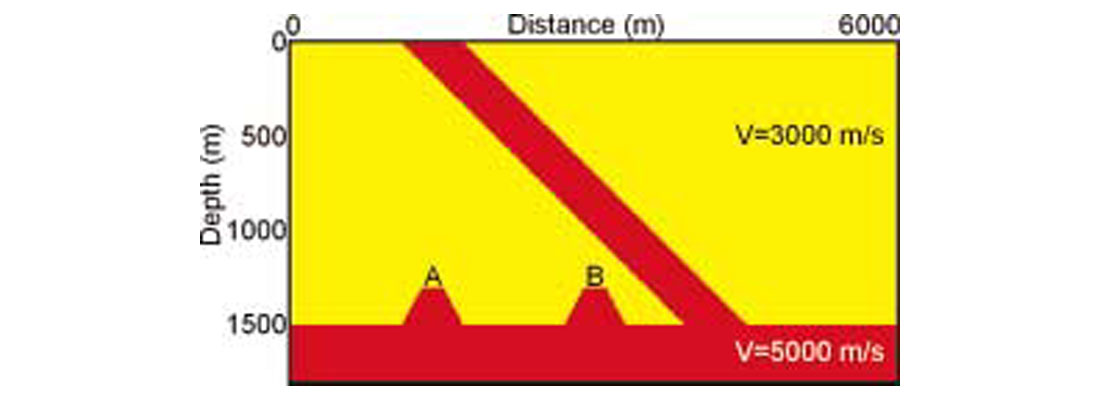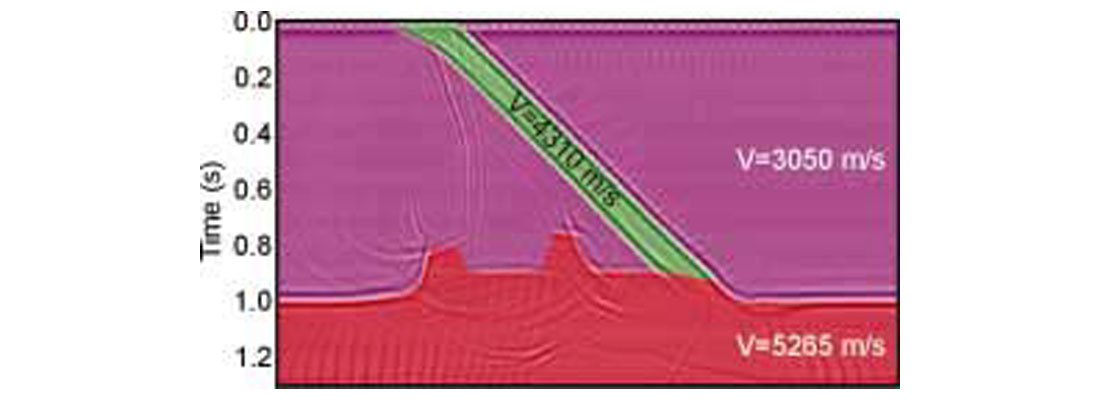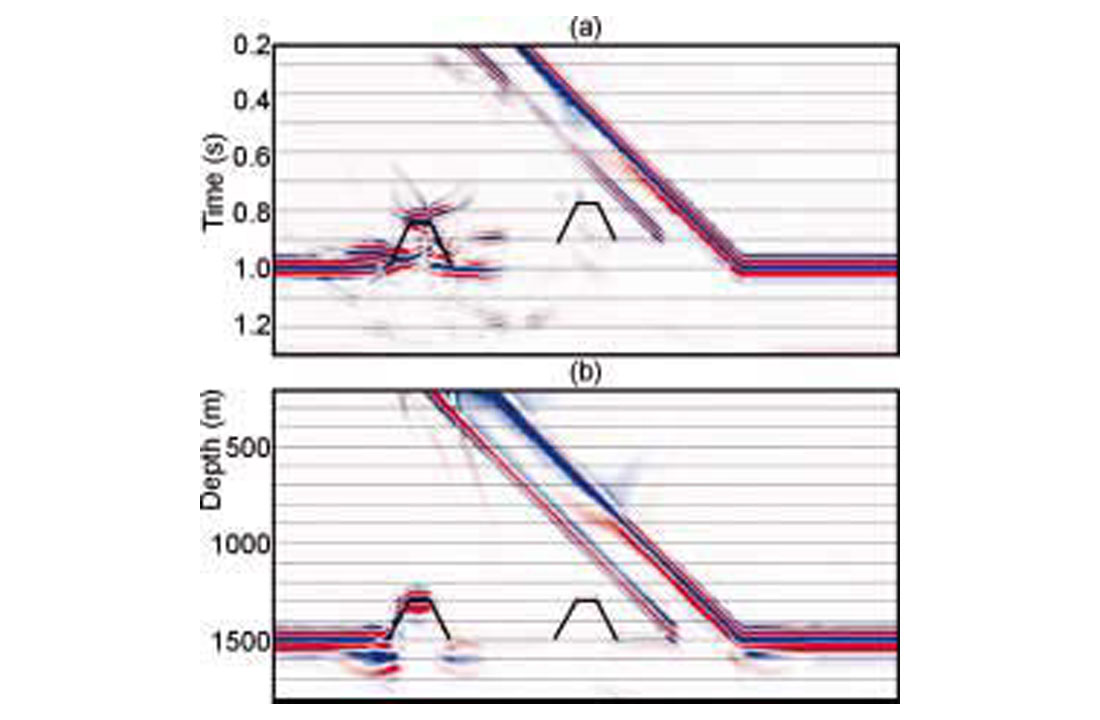Abstract
Pre-stack time and depth migrations of synthetic seismic data demonstrate that time migration does not always position images accurately, even when the exact velocity field is used, whereas prestack depth migration locates images correctly and focuses them better.
Method
In recent years the advantages of pre-stack depth migration have been well demonstrated. Many authors have discussed the difference between time and depth migration algorithms and the improvement in focussing achieved by pre-stack depth migration when a good velocity model is available (e.g., Gray, 1997; Lines et al., 1999; Schneider et al., 2000; Albertin et al., 2001; Lines et al., 2001; Gray et al., 2001). Here, we investigate the lateral positioning errors of time-migrated images caused by time migration algorithms that do not account for ray-bending.
We created an isotropic velocity model consisting of a dipping thrust sheet with two reefs situated underneath it (Figure 1). The velocity of the thrust, reefs and basement is 5000 m/s while the surrounding material has a velocity of 3000 m/s. A synthetic data set was generated in ProMAX by FD modelling. Shots were spaced 100 m apart and receivers 20 m apart with the farthest offset being 2000 m.

We migrated the data using both the known velocity field and a velocity field obtained by standard processing techniques. Stacking velocities were determined by standard semblance analysis and the data stacked and post-stack migrated. The stacking velocities were converted to interval velocities in time and this velocity field was edited using the post-stack section as a guide to the layers. We assigned single velocities to the section around the thrust, the thrust itself and the basement (Figure 2). These velocities are lower than the true velocity within the thrust and higher than the true velocity within the reefs and basement. This time/interval velocity field was then converted to depth/interval velocity. We pre-stack migrated the data in both time and depth with the appropriate interval velocity field.

On the stacked data (Figure 3a) it is hard to interpret the positions of the reefs but on the post-stack time migrated data (Figure 3b) the interpretation is easier. Unfortunately, the interpreter would probably place reef A too far to the right and reef B too far to the left. In all the figures black lines indicate the true locations of the reefs. The pre-stack migrated images (Figure 4) focus the reefs quite well. However, the pre-stack time migration places reef B too far to the left by about 120 m. The position of reef A is good. In depth, both reefs are positioned at almost the correct location and depth. This mispositioning in time is caused by the migration algorithm, which pays no attention to ray bending. It has nothing to do with anisotropy, which would only make the problem worse.

We also pre-stack migrated the data in time and depth using the exact velocity model (Figure 5). Again, the time image of reef B is shifted updip underneath the dipping thrust sheet by about 140 m and reef Aby about 30 m. Reef Ais, however, not well focussed and its geometry is unclear. It is apparent that the image mispositioning becomes worse as the location of the reef moves further underneath the thrust sheet. The depth images are positioned exactly.


Discussion
The difference in the migrations is a function of the velocity models inherent in time and depth migrations. Depth migration is achieved by moving reflector energy backward to the point of reflection by using the wave equation (as in reverse time) or ray-tracing (as in Kirchhoff migration). Exact velocity fields are used. Time migration uses straight ray models and stacks along symmetric hyperbolae – a model that is accurate only when there are no lateral velocity variations.
Conclusions
Time migration of seismic data will not necessarily image reflectors in their correct lateral position. The limitations of migration methods that do not honour ray-bending become obvious when an incorrect image is obtained even when the correct velocity model is used. Interpreters should be aware of the shortcomings of different migration methods and, sadly, learn to be suspicious of their time-migrated seismic data, especially in situations where the inherent processing assumptions are violated.

Acknowledgements
We gratefully acknowledge the financial support for this work by sponsors of the Fold-Fault Research Project.










Join the Conversation
Interested in starting, or contributing to a conversation about an article or issue of the RECORDER? Join our CSEG LinkedIn Group.
Share This Article